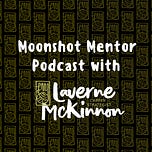A little update about this Substack! I'm going back to audio-only podcasts which you can also listen to on Apple/Spotify (plus, I’ve unlocked all past episodes previously limited by the paywall). I’ll still be creating videos over on my YouTube Channel so feel free to follow me there. And for paid subscribers, I’m planning a lot of bonus content for you. Really excited about these changes and looking forward to your feedback.
I used to hate networking. It felt clunky, false and forced because I wanted my entire network to feel deeply meaningful. Then I realized I was approaching networking as one-size-fits-all. Turns out not every relationship has to be long-term and “Kumbaya.” Some networking is purely transactional, and that’s okay. The problem is when we mix the two approaches (relational and transactional) or don’t understand their distinct purposes.
By recognizing the difference, you can approach networking with clarity and intention. So, how do you know when to lean on transactional networking versus building a trust-based, long-term relationship? The answer can ease your anxiety and help you feel more confident—even if you’re worried you have "nothing to offer."

What Is Transactional Networking?
Transactional networking is focused, goal-oriented, and short-term. It’s about meeting an immediate need—like asking for advice, a connection, or a piece of information—without the expectation of a long-term relationship.
Imagine you’re shopping for jeans. You ask the sales associate for help finding your size. They provide advice or direction, and you might say no thanks or buy the jeans. You’re not trying to build a lifelong friendship with the sales associate, and they’re not expecting that either. Both parties feel good about the exchange because it’s clear, direct, and mutually beneficial.
Some examples of transactional networking:
Asking someone in your extended network for an introduction to a hiring manager.
Reaching out to a weak LinkedIn connection for insights about a company you’re interviewing with.
Sharing insights with someone you meet at a conference without expecting further follow-up.
Transactional networking works best when it’s clear, focused, and rooted in respect. It’s not bad—as long as you’re not pretending it’s something else.
What Is Trust-Based Networking?
Most people I know want networking to be about building long-term relationships based on authentic connection. This approach is powerful but requires consistent, genuine effort. Unfortunately, many people lack the patience for this kind of networking—and that’s okay. What matters is being clear on your intention.
Trust-based networking is about creating meaningful, ongoing connections that provide mutual support and growth. Relationships like these often evolve into mentorships, advocacy, or alliances. They deliver greater personal and professional rewards for both parties but require time, emotional investment, and attention to detail.
Let’s be real: you can’t have dozens of these relationships. They demand significant effort, so it’s better to cultivate a few high-quality connections rather than spread yourself too thin.
Addressing the "I Have Nothing to Offer" Concern
Many people hesitate to network because they feel like they’re always asking for favors without offering anything in return. Here’s the truth: you already bring value to the table.
In transactional networking, your value lies in being clear, respectful, and expressing gratitude. A simple thank-you or a brief follow-up to share how their advice or referral helped goes a long way. In trust-based networking, your value comes from showing genuine interest, being consistent, and investing in the relationship over time. Sharing a resource, celebrating someone’s wins, or just being present are simple yet impactful ways to contribute.
The Key Differences Between the Two
Think of networking like visiting a new city: don’t go to New York expecting it to be San Francisco. Similarly, don’t expect a transactional interaction to turn into a trust-based relationship—and never reduce a trust-based connection to just a transaction. Both approaches are valid, but each has its place.
How to Successfully Network with Each Approach
Transactional Networking Tips:
Be direct and specific about your ask.
Respect the person’s boundaries and time.
Express gratitude in the moment.
Briefly follow up to share the outcome—even for small interactions.
Example:
My client Jeanne attended the American Film Market hoping to meet an executive from an international production company. She noticed they had a mutual acquaintance who had been on a panel with her. Jeanne asked for an introduction, met with the executive, and then sent the mutual acquaintance a thank-you email with no further requests. The interaction was simple, clear, and effective.
Trust Based Networking Tips:
Be patient and consistent with outreach and follow-ups.
Show genuine interest in the person’s values, work, and goals.
Find ways to provide value, even in small ways.
Example:
Jeanne started her entertainment career as an assistant at a small production company. She struck up a relationship with another assistant at a large agency. Over time, they bonded over shared interests like sports and travel, exchanged memes, and met up occasionally. Years later, this person became a literary agent who shared job leads and advocated for Jeanne. Their trust-based relationship continues to this day, with Jeanne now meeting the agent’s clients in her role as a creative executive.
Bottom Line
Networking is like dating: it’s all about intention. Are you looking for a quick interaction to meet a specific need, or are you seeking a deeper, long-term connection? When you’re clear about your goals, you can approach networking with integrity and purpose—without the guilt or stress.
Remember, neither approach is wrong. It’s simply about understanding what you need and communicating that clearly. By knowing when to use transactional exchanges and when to invest in long-term relationships, you can build a network that works for you—without the guesswork.
And if you’re worried you have nothing to offer, remember this: in both transactional and trust-based networking, your value comes from clarity, respect, and authenticity. Showing up with intention and gratitude is typically enough.
Journal Prompts
Reflecting on how you approach networking can provide valuable insights into your habits, goals, and mindset. To deepen your understanding of the ideas in this blog, take a few moments to explore these journal prompts (for paid subscribers only).
Listen to this episode with a 7-day free trial
Subscribe to Moonshot Mentor with Laverne McKinnon to listen to this post and get 7 days of free access to the full post archives.












